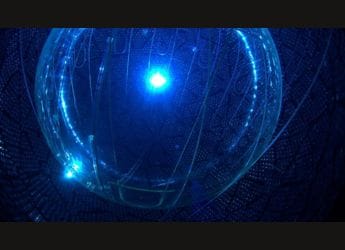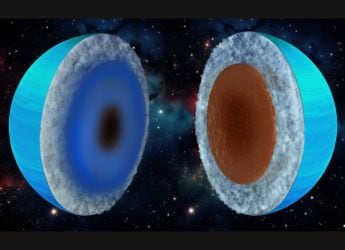- Home
- Others
- Others News
- Brains as clear as jell o for scientists to explore
Brains as clear as jell-o for scientists to explore

Scientists at Stanford University reported Wednesday that they had made a whole mouse brain, and part of a human brain, transparent, so that networks of neurons that receive and send information can be highlighted in stunning color and viewed in all their three-dimensional complexity without slicing up the organ.
Even more important, experts say, is that unlike earlier methods for making the tissue of brains and other organs transparent, the new process, called Clarity by its inventors, preserves the biochemistry of the brain so well that researchers can test it over and over again with chemicals that highlight specific structures within a brain and provide clues to its past activity. The researchers say this process might help uncover the physical underpinnings of devastating mental disorders like schizophrenia, autism, post-traumatic stress disorder and others.
The work, reported Wednesday in the journal Nature, is not part of the Obama administration's recently announced initiative to probe the secrets of the brain, although the senior author on the paper, Dr. Karl Deisseroth at Stanford, was one of those involved in creating the initiative and is involved in planning its future.
Dr. Thomas Insel, director of the National Institute of Mental Health, which helped fund the research, described the new work as helping to build an anatomical "foundation" for the Obama initiative, which is meant to look at ongoing activity in the brain.
Insel added that the technique works in a human brain that has been in formalin, a preservative, for years, which means that long-saved human brains might be studied.
"Frankly," he said, "that is spectacular."
Kwanghun Chung, the primary author on the paper, and Deisseroth worked with a team at Stanford for years to get the technique right. Deisseroth, known for developing another powerful technique, called optogenetics, that allows the use of light to switch specific brain activity on and off, said Clarity could have a broader impact than optogenetics.
"It's really one of the most exciting things we've done," he said, with potential applications in neuroscience and beyond.
"I think it's great," said Dr. Clay Reid, a senior investigator at the Allen Institute for Brain Science in Seattle, who was not involved in the work. "One of the very difficult challenges has been making the brain, which is opaque, clear enough so that you can see deep into it."
This technique, he said, makes brains "extremely clear" and preserves most of the brain chemistry. "It has it all," he said.
In the mid-2000s Reid was part of a team led by Dr. Jeff Lichtman at Harvard that developed a process called Brainbow to breed mice that are genetically altered to make their brain neurons fluoresce in many different colors. The new technique would allow whole brains of those mice with their rainbow neurons to be preserved and studied.
"I'm quite excited to try this," Lichtman said.
There are several ways to make tissue transparent. The key to the new technique is a substance called a hydrogel, a material that is mostly water held together by larger molecules to give it some solidity.
Chung said the hydrogel formed a kind of mesh that permeates the brain and connects to most of the molecules, but not to the lipids, which include fats and some other substances. The brain is then put into a soapy solution and an electric current is applied, which drives the solution through the brain, washing out the lipids. Once they are out, the brain is transparent, and its biochemistry is intact, so it may be infused with chemicals, like antibody molecules that also have a dye attached, that show fine details of its structure and previous activity.
Techniques like this, said Insel, "should give us a much more precise picture of what is happening in the brains of people who have schizophrenia, autism, post-traumatic stress disorder, bipolar disorder and depression."
The tricky part was getting the right combination of temperature, electricity and solution, and it was very tricky indeed, Chung said. Over the course of years spent trying to make it work, he said, "I burned and melted more than a hundred brains."
With the paper's publication, the recipe is available to anyone who wants to use it, and, he said, "I think it will be relatively easy."
The technique has its limits, of course. Chung said more work needed to be done before it could be applied to a whole human brain, because a human's brain is so much larger than a mouse's and has more lipids.
Chung said he planned to start his own lab soon and to work on refining the technology. But he pointed out that it was already known that it works on all tissue, not just brains, and can be used to look for structures other than nerve cells.
On his laboratory bench, he said, "I have a transparent liver, lungs and heart."
Reid agreed that Clarity had applications in many fields.
"It could permeate biology," he said.
© 2013, The New York Times News Service
Get your daily dose of tech news, reviews, and insights, in under 80 characters on Gadgets 360 Turbo. Connect with fellow tech lovers on our Forum. Follow us on X, Facebook, WhatsApp, Threads and Google News for instant updates. Catch all the action on our YouTube channel.
Related Stories
- Samsung Galaxy Unpacked 2025
- ChatGPT
- Redmi Note 14 Pro+
- iPhone 16
- Apple Vision Pro
- Oneplus 12
- OnePlus Nord CE 3 Lite 5G
- iPhone 13
- Xiaomi 14 Pro
- Oppo Find N3
- Tecno Spark Go (2023)
- Realme V30
- Best Phones Under 25000
- Samsung Galaxy S24 Series
- Cryptocurrency
- iQoo 12
- Samsung Galaxy S24 Ultra
- Giottus
- Samsung Galaxy Z Flip 5
- Apple 'Scary Fast'
- Housefull 5
- GoPro Hero 12 Black Review
- Invincible Season 2
- JioGlass
- HD Ready TV
- Laptop Under 50000
- Smartwatch Under 10000
- Latest Mobile Phones
- Compare Phones
- Redmi Note 15 5G
- Redmi Note 15 Pro 5G
- Redmi Note 15 Pro+ 5G
- Lava Play Max
- Poco C85 5G
- Honor Magic 8 Lite
- Jolla Phone
- Realme P4x 5G
- Asus ProArt P16
- MacBook Pro 14-inch (M5, 2025)
- OnePlus Pad Go 2
- Poco Pad M1
- Just Corseca Skywatch Pro
- Honor Watch X5
- Acerpure Nitro Z Series 100-inch QLED TV
- Samsung 43 Inch LED Ultra HD (4K) Smart TV (UA43UE81AFULXL)
- Asus ROG Ally
- Nintendo Switch Lite
- Haier 1.6 Ton 5 Star Inverter Split AC (HSU19G-MZAID5BN-INV)
- Haier 1.6 Ton 5 Star Inverter Split AC (HSU19G-MZAIM5BN-INV)

















